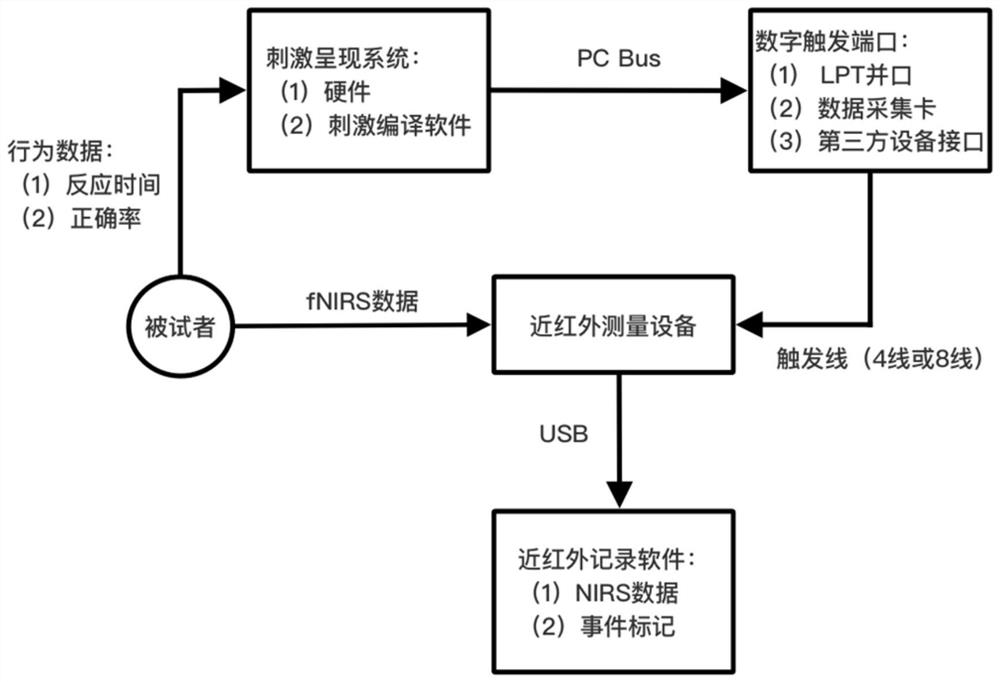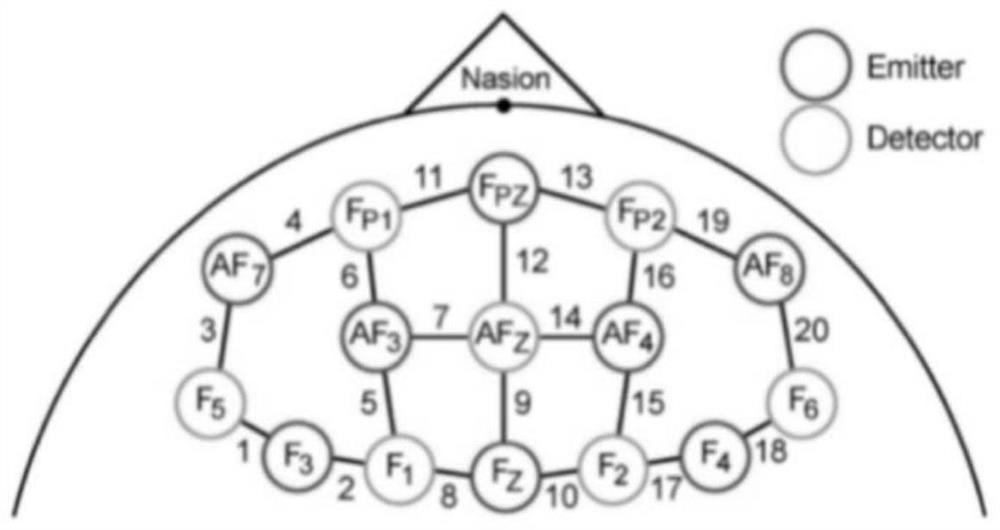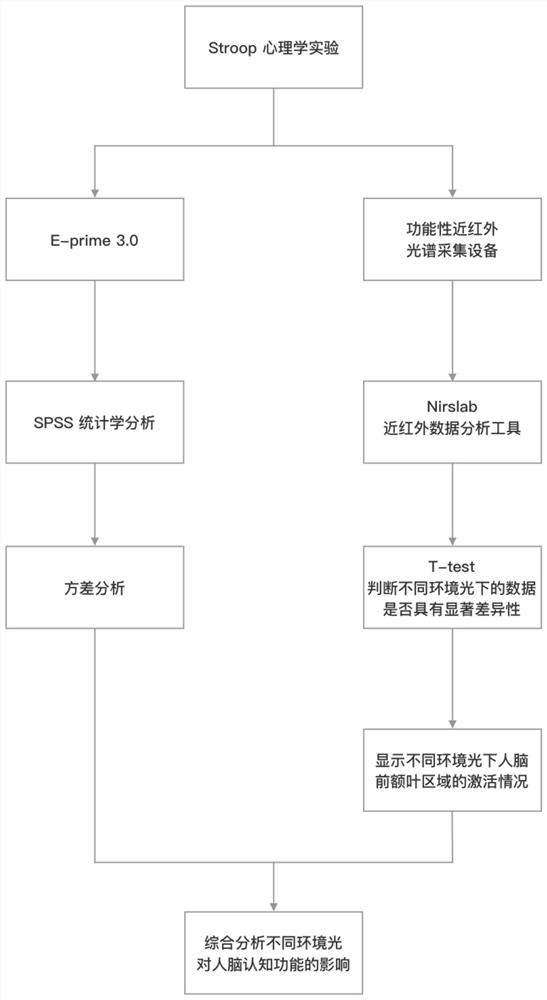Near-infrared spectroscopy detection method of ambient light modulated brain cognitive function
A near-infrared spectrum and cognitive function technology, which is applied in the field of near-infrared spectrum detection in which ambient light modulates brain cognitive function, can solve problems such as increased error rate and decreased response speed
- Summary
- Abstract
- Description
- Claims
- Application Information
AI Technical Summary
Problems solved by technology
Method used
Image
Examples
Embodiment Construction
[0022] Light regulates the function of the human brain through its effects on the body's circadian rhythm, which is related to many behavioral and physiological effects in humans. Functional near-infrared spectroscopy (fNIRS) can be used to obtain non-invasive optical neuroimaging of brain activation. The purpose of the study was to explore the effects of light on the cognitive function of the human brain through fNIRS neuroimaging.
[0023]In the process of paying attention to how the light regulates cognition, the testees are arranged under different parameter light conditions to carry out the psychological Stroop experimental test; the present invention uses E-prime software to record the behavioral data of the testee, that is, the testee's Response time and accuracy; at the same time, use the fNIRS data acquisition system to record near-infrared data during the experiment. The specific process is as follows:
[0024] (1) Design the experimental environment, specifically ...
PUM
 Login to View More
Login to View More Abstract
Description
Claims
Application Information
 Login to View More
Login to View More - R&D
- Intellectual Property
- Life Sciences
- Materials
- Tech Scout
- Unparalleled Data Quality
- Higher Quality Content
- 60% Fewer Hallucinations
Browse by: Latest US Patents, China's latest patents, Technical Efficacy Thesaurus, Application Domain, Technology Topic, Popular Technical Reports.
© 2025 PatSnap. All rights reserved.Legal|Privacy policy|Modern Slavery Act Transparency Statement|Sitemap|About US| Contact US: help@patsnap.com



